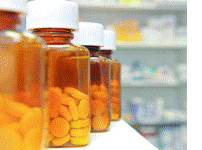Product liability insurance provides protection for legal liability arising from bodily injury or property damage related to the manufacture and sale of products. Comprehensive General Liability (CGL) policies generally provide coverage for product liability under the “products hazard” provision.
|
|
Not Just For So-Called “Manufacturers”
If your company places products in the stream of commerce, you need appropriate insurance coverage. Manufacturers or producers of products are not the only parties subject to product liability exposure. Distributors, wholesalers, and importers are often brought into lawsuits for alleged negligence and can be held liable for damages to the product’s consumer or third parties.
Typical Categories of Product Liability Claims
Product liability claims generally fall into 3 categories:
- Design Defects: claims that the product is inherently defective.
- Manufacturing Defects: claims that a mistake or accident occurred in the production of the product making it defective.
- Failure to Warn: claims that the product is not properly labeled or failed to provide sufficient warnings for the product’s user to understand its potential risks.
Common Defenses To Coverage
While insurers may assert that a CGL policy does not provide coverage for a product liability claim on the basis of a variety of issues related to a specific claim, insurers most often rely on the following three “business risk” exclusions when denying coverage:
- Own-product exclusion. Bars coverage only for damage to the policyholder’s own products.
- Sistership exclusion. Bars coverage for loss related to the recall of the insured’s own product for any known or suspected defect or deficiency.
- Loss of use exclusion. This is also known as the failure to perform exclusion, it seeks to limit coverage for loss of use of property not otherwise injured resulting from a failure of performance, a design deficiency or a defect.
Representative Experience
Perkins Coie’s Insurance Recovery lawyers have represented policyholders in numerous actions seeking coverage for product liability claims. Recent examples include:
- A manufacturer of slurry-coated roofing tiles in litigation in California state court with 18 insurers seeking coverage for a putative California class action alleging that the roofing tiles prematurely deteriorated and degraded.
- A hardboard siding manufacturer for whom we secured an approximately $400 million verdict for coverage against more than 20 of its insurers.
- A manufacturer of polybutylene pipes in obtaining insurance coverage for various lawsuits alleging that the pipes caused property damage.
- A manufacturing subsidiary of Level 3 Communications in litigation with several liability insurers over hearing loss-related bodily injury claims. The litigation was in federal trial and appellate court and an appeal to the Fifth Circuit and resulted in millions of dollars in defense coverage and a favorable settlement on indemnity coverage.
- A Fortune 50 pharmaceutical company in a four-month trial against more than 30 of its primary and excess liability insurers over asbestos and other bodily injury claims. The trial resulted in settlements worth several hundreds of millions of dollars and a liability verdict almost entirely in client’s favor.
- A Fortune 500 policyholder in a London arbitration under the English Arbitration Act against a Bermuda-based insurance company for bodily injury claims arising out of silicone breast implants.
- Business Interruption
- Cyber Attacks and Data Breaches
- Directors’ and Officers’ Liability
- D&O Checklist
- Energy Practice
- Environmental Liabilities
- Fracking
- International Arbitration
- Litigation Defense Costs
- Marine Insurance
- Natural and Man-Made Disasters
- Policy Audits
- Product Liability
- Real Estate Transactions




 The primary purpose of CGL insurance is to cover legal liability of the policyholder for accidents happening away from the premises owned, rented or controlled by the policyholder. The insurer typically is obligated to defend its policyholder against potentially-covered claims.
The primary purpose of CGL insurance is to cover legal liability of the policyholder for accidents happening away from the premises owned, rented or controlled by the policyholder. The insurer typically is obligated to defend its policyholder against potentially-covered claims.